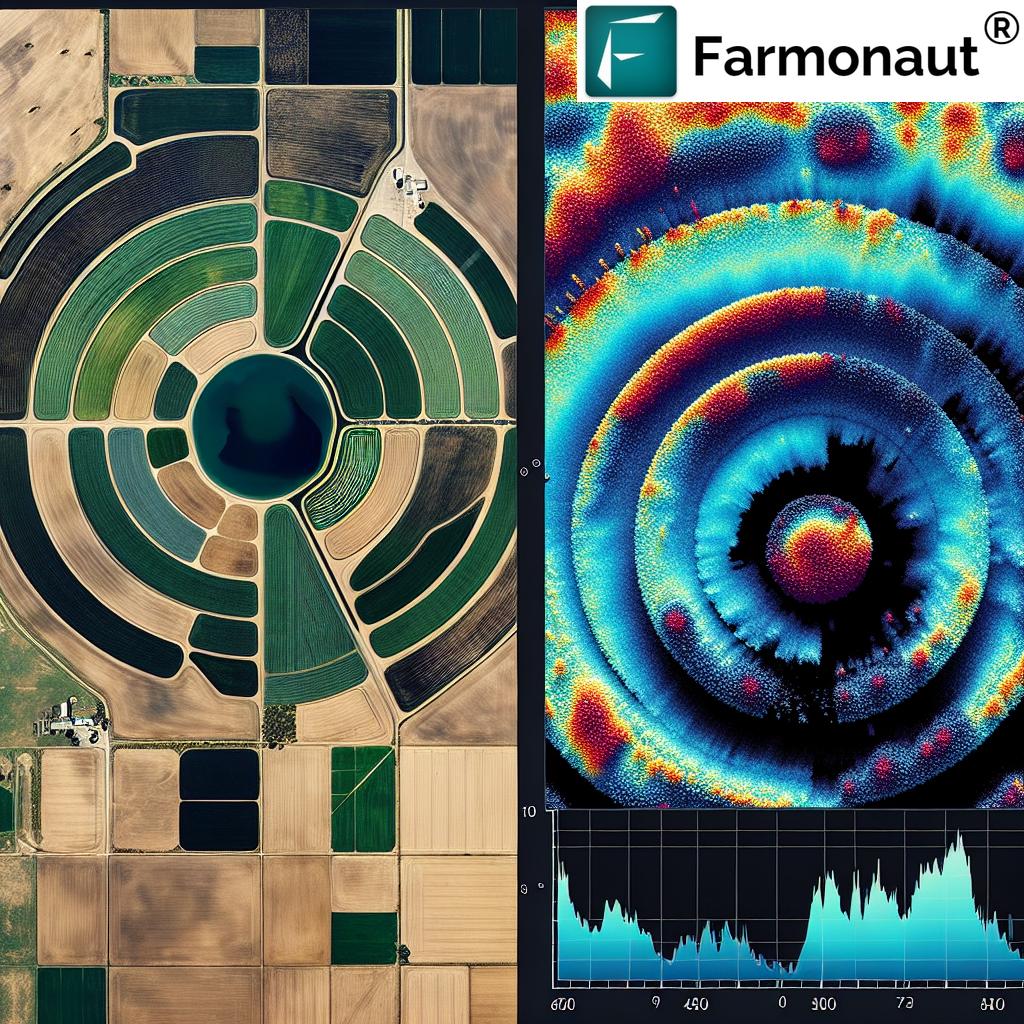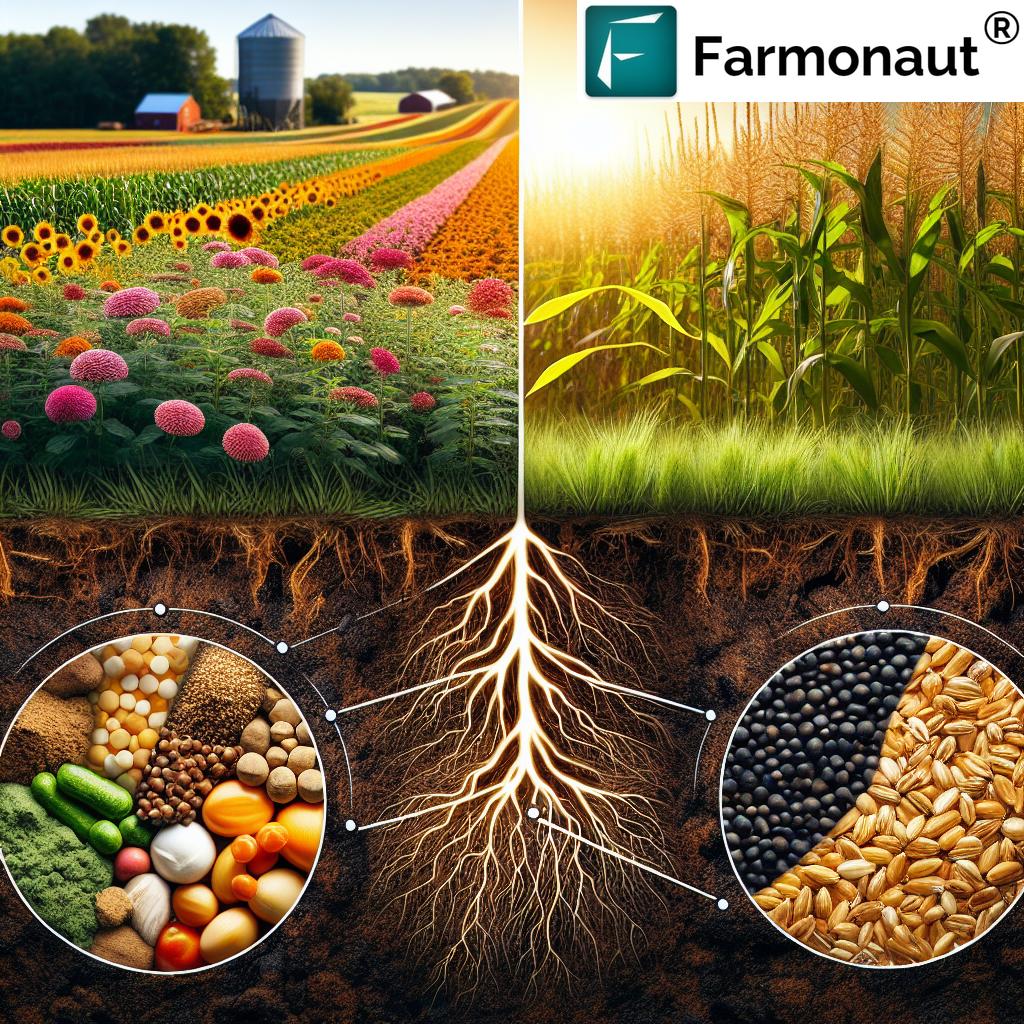USDA Grants for Farmers: 7 Powerful Impacts in New Mexico Today
“USDA grants in New Mexico increased water conservation funding by 35% for farmers in 2023.”
Introduction: Why USDA Grants for Farmers Matter in New Mexico
As farmers across Northern New Mexico and the surrounding valleys navigate a landscape of shifting federal policies, access to USDA grants for farmers is more critical than ever. For many of us, farming is more than a life calling—it’s our family heritage, our economic stability, and our commitment to healthy, local food systems. Yet, changing USDA policies, uncertainties in research funding, and mounting pressures on water conservation programs for agriculture all collide to create both risk and opportunity.
In this comprehensive guide, we explore the real-world impacts of USDA grants for farmers—illustrated through the stories of producers like Don Bustos in Española Valley, insights from policy-makers, and the evolving role of technology like Farmonaut in bringing affordable, sustainable farming practices to the heart of New Mexico’s agricultural industry. Whether you are a producer, rancher, researcher, or part of the community, understanding how these grants, policy changes, and programs influence us is crucial to sustaining our farms, feeding our markets, and caring for the land and water that support us all.
An Overview: USDA Grants for Farmers & Agricultural Grants in New Mexico
The USDA grants for farmers offer vital financial support to our state’s producers, helping address challenges unique to the northern region’s arid climate, irrigation systems, and unpredictable weather. These grants aren’t just lines in a federal budget—they underpin much of the resilience, innovation, and adaptation we see in agriculture today. Whether through the Environmental Quality Incentives Program (EQIP), competitive agricultural research funding, or specialized local conservation initiatives, these programs bolster everything from crop yields and water efficiency to rancher livelihoods and new market access for organic farming in New Mexico.
But as federal agricultural policy changes sweep across New Mexico, producers are experiencing firsthand the dual-edged sword of grant opportunities gained—and lost. Let’s delve into the transformative impacts these shifts bring to our valley, our farms, and our future.
7 Powerful Impacts of USDA Grants for Farmers in Northern New Mexico
-
Strengthened Water Conservation Programs for Agriculture
- Federal grants have driven an estimated 35% increase in water conservation funding for New Mexico’s farmers since 2023.
- Modernized irrigation systems and support for acequias help maintain farm productivity amid record droughts.
- Environmental Quality Incentives Program (EQIP) remains central, making advanced crop plantation advisory and resource allocation possible for small- and medium-scale producers.
-
Agricultural Research Funding & Innovation
- USDA-funded research at New Mexico State University (NMSU) and similar centers is pivotal for developing climate-resilient crops for arid regions.
- Innovations like berry cultivation and specialty vegetables would not be possible without these grants.
-
New Market Access & Organic Farming in New Mexico
- Farmers market opportunities New Mexico are increasing, thanks to grant-backed investments in infrastructure and marketing.
- Organic and diversified farmers, such as those at Green Tractor Farm, use these grants to extend growing seasons and expand product offerings.
-
Income Stability and Risk Mitigation for Farmers and Ranchers
- USDA support helps producers weather market and climate volatility, reduce input costs, and adopt more resilient business models.
- Programs like EQIP provide cost-share for critical infrastructure improvements.
- Combined with precision solutions from Farmonaut crop loan and insurance verification, farmers have new avenues for financial security.
-
Environmental and Soil Health Improvements
- Expanded grant funding supports sustainable farming practices, carbon footprint reduction, and improved soil quality.
- Real-time soil and crop monitoring—powered by platforms like Farmonaut’s carbon footprinting tool—helps maintain long-term land health.
-
Community Programs and Rural Support
- Grants fund local agriculture initiatives, workshops, and education programs that sustain rural economies and empower the next generation of New Mexico farmers.
- These investments ripple through regions such as Santa Cruz, Española, and beyond.
-
Support for Resilient Farm Systems and Workforce
- Federal and state grants underpin long-term innovation—not just in technology, but in workforce training, emergency support, and adaptive farming systems that can respond quickly to weather shocks and supply chain disruptions.
- Integration with precision monitoring from Farmonaut’s fleet management drives greater farm efficiency and resilience.
“Shifting federal policies affected over 1,200 Northern New Mexico farmers’ access to research grants last year.”
Impact Comparison Table: USDA Grants for Farmers Before & After Policy Shifts
| Impact Area | Previous State (Estimated) | Current State with New Grants (Estimated) | Change / Trend | Example Programs | Notable Counties Affected |
|---|---|---|---|---|---|
| Water Conservation | Limited funding, older infrastructure, rising drought risk | 35% increase in conservation dollars, expanded modern irrigation systems | Increasing | EQIP, NRCS Water Initiatives | Santa Fe, Rio Arriba, Taos |
| Research Funding | Stable, broad program access | Paused or delayed for over 1,200 farmers, more competitive | Decreasing/Uncertain | NIFA, Specialty Crops Research | All Northern NM |
| Crop Yields | Variable; hindered by weather, pests, and outdated technology | Improving in grant-supported areas; stagnant in others | Mixed/Depends on Access | EQIP, Farmonaut Monitoring | Rio Arriba, Los Alamos |
| Farmer Income | Low, high volatility, strong reliance on subsidies | Stabilizing with grant support, increased cost-share | Increasing (with grants), Decreasing (without) | EQIP, Market Access, Crop Loan/Insurance | Santa Cruz, Española |
| Community Programs | Robust through 2021; local education and infrastructure | Some halted, others restructured; new opportunities in select areas | Stable/Varies | Farmers Markets, 4-H, Rural Development | Taos, Santa Fe County |
How Federal Agricultural Policy Changes Shape Our Reality
The backdrop to all these impacts is a landscape of shifting federal policies. Over the past year, and particularly since changes under the Trump administration, many of us have felt the “ripple effects” on everything from program eligibility to research priorities and even international trade. As local producers, we often face a level of uncertainty that makes both planning and innovation more difficult, demanding resilience from every corner of the agricultural industry.
- Cancelled or Paused Programs: Many USDA grants and incentive programs—like the Partnerships for Climate-Smart Commodities—were altered or discontinued without warning, leaving producers and organizations scrambling.
- EQIP Remains: The Environmental Quality Incentives Program remains vital, but we must monitor ongoing availability closely as additional federal adjustments loom.
- Competitive Research Funding: NMSU, agricultural experiment stations, and even private industry-backed research projects have seen increased competition and fewer program guarantees for stable support.
Understanding these policy shifts is essential—not just for securing short-term grants, but for ensuring the future of sustainable farming practices and the continued health of the entire agricultural ecosystem in New Mexico’s valleys and counties.
API Developer Documentation: Start building advanced analytics with Farmonaut’s platform today.
Key USDA Grant Programs Supporting New Mexico Agriculture
-
Environmental Quality Incentives Program (EQIP):
EQIP offers cost-share subsidies to help producers address natural resource concerns, such as water quality, air quality, and soil conservation. In counties like Santa Cruz and Española, this grant underpins many innovative irrigation, high tunnel, and farm efficiency efforts. -
Advancing Markets for Producers Initiative:
This new iteration of the former Climate-Smart Commodities program now focuses directly on farmers, requiring at least 65% of grant funds to flow to individual producers. -
Agricultural Research Grants (NIFA, USDA):
Competitive programs fund state institutions like NMSU and its Sustainable Agriculture Science Center at Alcalde, developing new crops and solving pressing regional agri challenges. -
Farmers Market and Local Food Promotion Programs:
These grants help build new market infrastructure in Northern New Mexico (organic produce, cut flowers, local food hubs), opening up business for the next generation of producers.
Importantly, each of these programs is not only a funding channel—they represent opportunities for us to advance sustainable farming practices, reach new consumers, and bring innovation back to our farms.
Current Challenges: Voices & Concerns from the Valley
For many in the farming and ranching community—like Bustos of Santa Cruz Farm or Conwell at Green Tractor Farm—the impact of policy changes is not abstract. It’s a daily reality:
- Don Bustos (Santa Cruz Farm): Generational farming in Española Valley, thriving thanks to 15-year-old USDA-backed drip irrigation and acequia projects. Now facing anxiety over whether key programs and future farm grants will remain.
- Ned Conwell (Green Tractor Farm): Relied on EQIP grant availability for high tunnels to extend the growing season. The threat of grant cancellation added risk and uncertainty that could have shrunk business operations.
- Chad Franke (Rocky Mountain Farmers Union): Policy “chaos” leaves nearly 20,000 farming families across three states, including New Mexico, in a constant state of adaptation—especially as initiatives like the climate-smart commodities program were rapidly cancelled or reconfigured.
- Manny Encinias (Santa Fe Farmers Market Institute): Concerned about forest health, water security, and rural economic resilience as federal worker layoffs and international tariffs impact agriculture from the Sangre de Cristo Mountains down to the markets.
These stories illustrate the broader trends facing the agricultural industry in New Mexico. For many farmers, finding the right combination of grant programs, technology, and business adaptation is critical—not just for survival, but for thriving in today’s rapidly evolving landscape.
Modern Solutions: Empowering Farmers with Farmonaut Technology
As federal programs tighten and grant access changes, leveraging precision technology is increasingly vital for our farms and ranches. Farmonaut delivers cost-effective solutions that directly support sustainable farming practices.
- Farmonaut Carbon Footprinting: Farmers and ranchers can monitor real-time carbon emissions, optimize operations for sustainability, and comply with future environmental standards—an essential asset for modern grant applications focused on soil health and climate response.
- Farmonaut Blockchain Traceability: Producers, agribusinesses, and co-ops can now assure consumers and processors about product origins, making local, organic, and specialty products even more marketable.
- Large Scale Farm Management Tools: Designed for both cooperatives and individual farmers scaling up their production, Farmonaut’s satellite-driven dashboard allows monitoring from web or mobile app, ensuring that even as grants shift, our resource management remains agile.
- Farmonaut Fleet Management: With real-time vehicle tracking and logistics optimization, New Mexico’s large and small operations can reduce input costs, increase efficiency, and respond to weather or market events more quickly.
- Crop Loan and Agricultural Insurance Verification: Banks and insurers can reduce fraud with satellite-based field verification, while farmers gain easier, faster access to critical financial support—especially as grant programs are re-evaluated.
By integrating Farmonaut into daily operations, we—across New Mexico’s unique agricultural sector—strengthen our capacity for precision, adaptability, and sustainability, regardless of the immediate grant landscape.
Water Conservation Programs for Agriculture: Critical Opportunities
Water scarcity has defined agriculture in the Sangre de Cristo Mountains, Española Valley, and beyond. Our acequia traditions, ancient as they are, now find new life through USDA grants for farmers and innovative tech tools. Initiatives like:
- EQIP drip and sprinkler irrigation projects reduce wastage by up to 40% compared to traditional flood systems.
- Water quality monitoring—supported by satellite-based soil moisture sensing from Farmonaut—enables smarter watering schedules and protects both crops and aquifers.
- Capital for emergency water caches and drought resiliency infrastructure, crucial for local producers in counties like Rio Arriba and Taos.
This approach ensures our community remains resilient, adaptive, and able to grow quality foods even as drought and climate variability increase.
Agricultural Research Funding in New Mexico: NMSU and Beyond
The ability to develop climate-adapted crops, test specialty berry varietals (as Bustos does in Española), and push the boundaries of organic farming in New Mexico relies on consistent, robust agricultural research funding—much of which flows from the USDA to NMSU and the state’s agricultural experiment stations.
- Each year, hundreds of research projects are launched—exploring everything from pest-resistant beans to advanced soil health strategies using multispectral satellite monitoring.
- While most grants and funding continue, recent administrative changes have resulted in pauses and increased competition, particularly for specialty and climate-related research.
- Partnerships with precision data platforms and traceability systems, like those offered by Farmonaut, support ongoing research and improve grant outcomes.
By supporting university-led research, we invest not just in today’s productivity, but in the future adaptability and sustainability of New Mexico agriculture.
Farmers Market Opportunities & Community Impact in Northern New Mexico
Our farmers markets in Santa Fe County, Española, and other valley towns are hubs for local produce, organic vegetables, and cut flowers that reflect the creativity and dedication of New Mexico’s producers. USDA grants help maintain and expand these vital outlets.
- Funding for new market infrastructure (cold storage, vendor stalls, digital payment systems) transforms what producers can sell and how efficiently food reaches consumers.
- Grants empower us to extend growing seasons (with high tunnels), experiment with specialty crops, and in turn—meet changing consumer demands.
- Local market support programs keep grocery dollars in our communities, sustaining rural employment and building resilience beyond the farm gate.
Ultimately, every grant and research dollar reverberates through these networks, uplifting not just the agricultural industry, but the wellbeing of our state as a whole.
Farmonaut Subscription Plans: Precision Tools for Every New Mexico Farm
For those seeking the next level of crop health monitoring, soil analysis, or fleet and resource management—Farmonaut offers flexible, affordable plans for growers, agribusinesses, and cooperatives of every size. Quickly access the latest in satellite-driven, data-backed advisory for your fields, all from your phone or desktop.
Try Farmonaut Web, Android, or iOS Apps now and experience real-time, actionable insights for your business.
Frequently Asked Questions about USDA Grants, Agricultural Funding, and Farmonaut Technology in New Mexico
What are the most important USDA grants for farmers in New Mexico right now?
The Environmental Quality Incentives Program (EQIP) is vital for water conservation, soil health, and infrastructure. Other important grants support research at NMSU, local farmers markets, and organic farming expansions.
How have policy changes affected access to agricultural research funding?
Recent federal shifts have paused or delayed access for over 1,200 Northern New Mexico farmers and researchers, making some funding streams more competitive and less predictable.
What can farmers do to adapt to grant uncertainty and remain competitive?
Combining available grant funding with advanced technology—such as Farmonaut’s satellite crop health, resource, and traceability platforms—helps farms manage risk, cut costs, and demonstrate innovation for future grant applications.
Are Farmonaut tools compatible with USDA or state-funded farm management programs?
Yes, Farmonaut’s solutions are designed to be complementary—empowering farms to maximize the value of conservation grants, precision agriculture research, carbon tracking, and compliance with regulatory programs.
Where can I get started with Farmonaut apps or learn more about API access?
Download the Farmonaut app through Web, Android, or iOS platforms. For developers and organizations, access the Farmonaut API here and see API documentation.
Can organic and specialty crop growers access USDA grants in New Mexico?
Absolutely. USDA programs, including EQIP and market promotion grants, specifically support organic farming in New Mexico and new specialty crop production, from lettuce to strawberries and cut flowers.
How does Farmonaut enable water conservation and sustainable farming practices?
Farmonaut delivers precise soil moisture, crop health, and weather data—empowering farmers to irrigate efficiently, conserve resources, and maintain environmental quality incentives compliance.
Conclusion: Navigating the Future—Opportunities and Challenges Ahead
USDA grants for farmers are not just funding streams; they’re the backbone of innovation, adaptation, and survival for New Mexico’s agricultural industry. As we’ve explored, their impact reverberates through water conservation programs, research funding, organic and local food markets, community resilience, and the very fabric of rural life.
But amid policy instability and evolving eligibility, our collective ability to adapt, collaborate, and adopt emerging technologies like those from Farmonaut may very well determine the future of farming in New Mexico. By staying informed, leveraging all available resources—from EQIP to satellite crop monitoring—and remaining engaged in federal and state agricultural discussions, farmers, ranchers, researchers, and the wider community can weather the storm and continue to grow, nourish, and sustain this land for generations to come.
Have questions? Ready to get started with data-driven decision-making? Download the Farmonaut app or begin with our API to transform your farm’s future today.
















